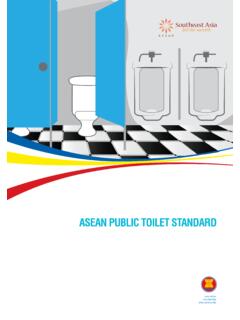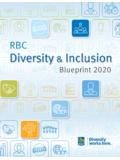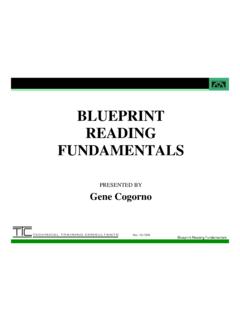Transcription of ASSOCIATION OF SOUTHEAST ASIAN NATIONS …
1 ASEAN ECONOMIC COMMUNITYBLUEPRINT 2025one vision, one identity, one communityASSOCIATION OF SOUTHEAST ASIAN EcoNomic commuNity blueprint 2025the ASEAN SecretariatJakartaThe ASSOCIATION of SOUTHEAST ASIAN NATIONS (ASEAN) was established on 8 August 1967. The Member States of the ASSOCIATION are Brunei Darussalam, Cambodia, Indonesia, Lao PDR, Malaysia, Myanmar, Philippines, Singapore, Thailand and Viet Nam. The ASEAN Secretariat is based in Jakarta, inquiries, contact:The ASEAN SecretariatPublic Outreach and Civil Society Division70A Jalan SisingamangarajaJakarta 12110 IndonesiaPhone : (62 21) 724-3372, 726-2991 Fax : (62 21) 739-8234, 724-3504E-mail : Catalogue-in-Publication DataASEAN Economic Community blueprint 2025 Jakarta: ASEAN Secretariat, November ASEAN Community AEC Blueprint2. Economic Community Economic IntegrationISBN 978-602-0980-59-1 ASEAN: A Community of OpportunitiesGeneral information on ASEAN appears online at the ASEAN Website: The text of this publication may be freely quoted or reprinted, provided proper acknowledgement is given and a copy containing the reprinted material is sent to the Public Outreach and Civil Society Division of the ASEAN Secretariat, JakartaCopyright ASSOCIATION of SOUTHEAST ASIAN NATIONS (ASEAN) rights reserved1 ASEAN ECONOMIC COMMUNITY blueprint 2025 ASEAN EcoNomic commuNity blueprint 2025i.
2 INtroDuctioN 1. The implementation of the ASEAN Economic Community (AEC) blueprint 2015 has been substantively achieved in, among others, eliminating tariffs and facilitating trade; advancing the services trade liberalisation agenda; liberalising and facilitating investment; streamlining and harmonising capital market regulatory frameworks and platforms; facilitating skilled labour mobility; promoting the development of regional frameworks in competition policy, consumer protection and intellectual property rights; promoting connectivity; narrowing the development gap; and strengthening ASEAN s relationship with its external ASEAN recognises that regional economic integration is a dynamic, ongoing process as economies as well as domestic and external environments are constantly evolving.
3 In this context, ASEAN has initiated two studies for the AEC blueprint 2025. The AEC blueprint 2025 has been developed taking into account the recommendations of the two studies, namely, by the Economic Research Institute for ASEAN and East Asia (ERIA), and the S. Rajaratnam School of International Studies (RSIS) and the Institute of SOUTHEAST ASIAN Studies (ISEAS), as well as inputs from other stakeholders. The measures taken have to lead in creating a networked, competitive, innovative, and highly integrated and contestable ASEAN. 3. The overall vision articulated in the AEC blueprint 2015 remains relevant. The AEC blueprint 2025 will build on the AEC blueprint 2015 consisting of five interrelated and mutually reinforcing characteristics, namely: (i) A Highly Integrated and Cohesive Economy; (ii) A Competitive, Innovative, and Dynamic ASEAN; (iii) Enhanced Connectivity and Sectoral Cooperation; (iv) A Resilient, Inclusive, People-Oriented, and People-Centred ASEAN; and (v) A Global The immediate priority is to complete the implementation of measures unfinished under the AEC blueprint 2015 by end-2016.
4 The continuing commitments of Cambodia, Lao People s Democratic Republic, Myanmar and Viet Nam (CLMV) under the AEC blueprint 2015 up to 2018 are also incorporated under the AEC blueprint 2025. 5. In the next decade, ASEAN will also provide a new emphasis on the development and promotion of micro, small and medium enterprises (MSMEs) in its economic integration efforts. At the same time, ASEAN will likewise embrace the evolving digital technology as leverage to enhance trade and investments, provide an e-based business platform, promote good governance, and facilitate the use of green ECONOMIC COMMUNITY blueprint 20256. The AEC 2025 is envisioned to:i. Create a deeply integrated and highly cohesive ASEAN economy that would support sustained high economic growth and resilience even in the face of global economic shocks and volatilities; ii.
5 Engender a more equitable and inclusive economic growth in ASEAN that narrows the development gap, eliminates if not reduces poverty significantly, sustains high growth rates of per capita income, and maintains a rising middle class;iii. Foster robust productivity growth through innovation, technology and human resource development, and intensified regional research and development that is designed for commercial application to increase ASEAN s competitive edge in moving the region up the global value chains (GVCs) into higher technology and knowledge-intensive manufacturing and services industries;iv. Promote the principles of good governance, transparency, and responsive regulatory regimes through active engagement with the private sector, community-based organisations, and other stakeholders of ASEAN;v.
6 Widen ASEAN people-to-people, institutional, and infrastructure connectivity through ASEAN and sub-regional cooperation projects that facilitate movement of capital as well as skilled labour and talents; vi. Create a more dynamic and resilient ASEAN, capable of responding and adjusting to emerging challenges through robust national and regional mechanisms that address food and energy security issues, natural disasters, economic shocks, and other emerging trade-related issues as well as global mega trends; vii. Incorporate a sustainable growth agenda that promotes a science-based use of, and support for, green technology and energy;viii. Promote the use of the ASEAN Protocol on Enhanced Dispute Settlement Mechanism (EDSM) and develop other approaches to speed up economic dispute resolution;ix.
7 Reinforce ASEAN centrality in the emerging regional economic architecture by maintaining ASEAN s role as the centre and facilitator of economic integration in the East ASIAN region; andx. Work towards a common position and enhance ASEAN s role and voice in global economic fora. 3 ASEAN ECONOMIC COMMUNITY blueprint 2025ii. cHArActEriSticS AND ElEmENtS oF ASEAN EcoNomic commuNity blueprint 2025 A. A Highly integrated and cohesive Economy7. The main objective of this characteristic is to facilitate the seamless movement of goods, services, investment, capital, and skilled labour within ASEAN in order to enhance ASEAN s trade and production networks, as well as to establish a more unified market for its firms and consumers. 8. The key elements of a highly integrated and cohesive ASEAN economy trade in Goods 9.
8 The implementation of AEC blueprint 2015 measures relating to tariff elimination in accordance with the ASEAN Trade in Goods Agreement (ATIGA) and trade facilitation have contributed to greater free flow of goods. In AEC 2025, ASEAN will continue to reduce or eliminate border and behind-the-border regulatory barriers that impede trade, so as to achieve competitive, efficient, and seamless movement of goods within the Strategic measures include the following: i. Strengthen ATIGA further. In view of the ongoing review of the ASEAN+1 free trade agreements (FTAs) and the Regional Comprehensive Economic Partnership (RCEP) negotiations, commitments in the ATIGA will be reviewed and refined to, among others, enhance provisions to entrench ASEAN centrality, strengthen the ATIGA s notification process, and bring down further the remaining tariff barriers in ASEAN towards the free flow of goods in the Simplify and Strengthen the Implementation of the Rules of Origin (ROO).
9 ROO implemented by ASEAN Member States should be simplified, business-friendly and trade-facilitative, to benefit the region s trade, in particular the participation of MSMEs to encourage them to expand, upgrade, and deepen their linkages within the region. Towards this end, priority sectors for Product Specific Rules (PSRs) can be negotiated, and processes for the determination of origin criteria Accelerate and Deepen the Implementation of Trade Facilitation Measures. ASEAN played a leading role in the conclusion of the World Trade Organization (WTO) Agreement on Trade Facilitation (ATF) in 2013. Beyond ensuring the smooth implementation of the ATF in ASEAN Member States, ASEAN aims towards convergence in trade facilitation regimes among ASEAN Member States and 4 ASEAN ECONOMIC COMMUNITY blueprint 2025to move closer to the global best practice.
10 The ASEAN Trade Facilitation-Joint Consultative Committee (ATF-JCC) comprising representatives from the public and private sectors has been established to accelerate work on trade facilitation and ensure expeditious movement of goods within the region. Among the key measures are the following:a. Complete measures initiated under the AEC blueprint 2015;b. Fully roll-out the National Single Windows in all ASEAN Member States, and widen the scope of the ASEAN Single Window project to include more documents and stakeholders in all ASEAN Member States;c. Cooperate on the effective operationalisation of the National and ASEAN Trade Repositories for enhanced regulatory transparency and certainty for the private sector in the region;d. Streamline and simplify administrative regulatory regimes, documentary requirements, as well as import and export procedures, including customs procedures;e.














